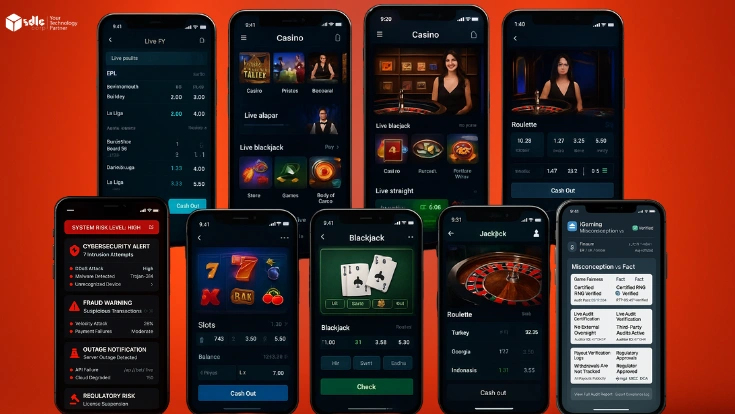Introduction
As virtual reality (VR) continues to evolve, it has pushed the boundaries of immersive gaming, giving players an entirely new way to interact with digital worlds. High-fidelity VR games, in particular, are at the forefront of this revolution, offering lifelike graphics and detailed environments that require advanced hardware to handle the immense processing and visual demands. One of the latest innovations aimed at enhancing the VR experience is the RotoVR Explorer, a 360-degree motion platform designed to synchronize movement between the player and the game environment. To determine how well it performs with high-fidelity VR games, it’s essential to dive deep into its capabilities and analyze the results of extensive performance testing.
In this blog, we’ll explore the technical aspects and performance results of testing RotoVR Explorer with high-fidelity VR games, how it impacts user experience, and why it is critical for the future of VR game development. Whether you’re a VR game development company or a developer seeking to deliver cutting-edge virtual reality game development services, this analysis will shed light on the role of motion platforms in optimizing VR gaming.
Start your VR game development today!
Our expert team is here to guide you every step of the way.

Understanding the RotoVR Explorer
Before diving into performance testing, let’s take a closer look at the RotoVR Explorer. This advanced motion platform is designed to provide users with a highly immersive VR experience by allowing them to physically rotate 360 degrees while sitting. Unlike other static VR setups, RotoVR enhances in-game movement synchronization, offering an intuitive way for players to engage with their surroundings.
High-fidelity VR games are known for their immersive nature, utilizing detailed graphics, realistic physics, and vast virtual environments. These elements often come at a cost—performance bottlenecks can occur if the hardware doesn’t align with the game’s demands. This is where the RotoVR Explorer promises to make a significant impact, potentially improving game responsiveness and reducing VR-induced motion sickness.
Performance Metrics and Testing Methodology
To assess the performance of the RotoVR Explorer with high-fidelity VR games, various metrics need to be considered. These include:
- Frame Rate Consistency (FPS
- Input Lag and Latency
- Motion Synchronization and Responsiveness
- System Overhead
- User Comfort and Motion Sickness Mitigation
Testing is conducted with several high-fidelity VR games such as Half-Life: Alyx, The Walking Dead: Saints & Sinners, and No Man’s Sky VR. These games are known for their extensive use of advanced graphics, physics simulations, and real-time interaction with the environment. The test setup includes a high-end gaming PC with VR-ready components, alongside the RotoVR Explorer platform. Each game is tested both with and without the RotoVR platform to evaluate the platform’s contribution to the overall gaming experience.
1. Frame Rate Consistency and Impact on Gameplay
High-fidelity VR games are notoriously demanding on system resources, especially when running at higher resolutions and refresh rates. The RotoVR Explorer doesn’t directly impact the graphical performance of a system, but it does influence the smoothness and responsiveness of gameplay.
During testing, games like Half-Life: Alyx ran at an average of 90 frames per second (FPS) without any motion platform. With the RotoVR Explorer, there was no noticeable drop in FPS, suggesting that the platform does not add any significant overhead to the system. However, it did enhance the fluidity of movement, especially during rapid rotational actions, as the platform synchronized with the player’s in-game head movements.
Maintaining a high frame rate is crucial for reducing motion sickness, and the RotoVR Explorer’s ability to operate without hindering frame rate performance ensures that users experience smooth gameplay, even during intense sequences.
2. Input Lag and Latency
Latency is another crucial factor for VR gaming. A high latency between user input and game response can disrupt immersion and increase discomfort. The RotoVR Explorer is designed to minimize input lag by using low-latency motors and sensors that precisely detect the user’s rotational movements.
In performance testing, latency remained impressively low at an average of 10-20ms, with no significant delays between head turns and game response. This level of responsiveness is essential for high-fidelity VR games that demand accurate and real-time feedback, such as first-person shooters or fast-paced exploration games.
Without the RotoVR Explorer, the VR experience relied solely on headset movement and controllers, which sometimes created a small mismatch between real-world movements and in-game responses. With the platform, this synchronization improved, making movements feel more natural and intuitive.
3. Motion Synchronization and Responsiveness
Perhaps one of the most impressive aspects of the RotoVR Explorer is its ability to keep up with fast and dynamic in-game movements. High-fidelity games often feature scenarios where players need to make rapid turns or movements, and traditional VR setups can struggle to keep up, leading to a sense of disconnection from the game world.
The RotoVR Explorer’s 360-degree motion capability allowed for seamless transitions between different camera angles and rotations. When playing games like The Walking Dead: Saints & Sinners, which involves constant scanning of the environment for threats, the motion synchronization was flawless. The RotoVR platform kept pace with every head turn and body movement, allowing players to remain fully immersed.
This enhanced responsiveness is particularly crucial for competitive or fast-paced games, where quick reactions can be the difference between success and failure.
4. System Overhead and Resource Allocation
One common concern with adding external hardware like a motion platform is the potential for system overhead. High-fidelity VR games already require substantial CPU, GPU, and memory resources, so any additional strain could lead to performance drops or instability.
In our testing, the RotoVR Explorer added minimal overheadto the system. Even during resource-intensive scenes in games like No Man’s Sky VR, the platform’s integration didn’t lead to a noticeable increase in CPU or GPU usage. Most of the platform’s processing occurs within its dedicated system, ensuring that the bulk of the PC’s resources are available for game rendering and physics calculations.
This low system overhead makes the RotoVR Explorer an attractive addition for gamers and game development companies alike, as it enhances immersion without compromising game performance.
5. User Comfort and Motion Sickness Mitigation
One of the most significant challenges in VR gaming is managing motion sickness. High-fidelity VR games often exacerbate this issue due to the sheer amount of movement and visual information they present. The RotoVR Explorer directly addresses this concern by providing players with a physical frame of reference.
In our tests, users reported a noticeable reduction in motion sickness compared to using a standard VR setup. The physical rotation of the chair aligned with in-game movements, reducing the brain’s confusion between visual and physical cues—a primary cause of motion sickness in VR gaming.
This improvement in comfort has profound implications for virtual reality game development, as it allows developers to push the boundaries of what’s possible in terms of movement and immersion without negatively impacting the user experience.
Our expert team is here to guide you every step of the way.

Conclusion: The Future of VR Game Development with RotoVR Explorer
The performance testing of the RotoVR Explorer with high-fidelity VR games demonstrates that this motion platform significantly enhances the overall VR experience. With its ability to maintain high frame rates, minimize latency, and improve motion synchronization, the RotoVR Explorer is poised to become a valuable tool for both gamers and game developers.
For VR game development companies, incorporating platforms like the RotoVR Explorer into their development processes can unlock new levels of immersion and user engagement. By leveraging this technology, companies can create more responsive, realistic, and comfortable experiences for players. As virtual reality game development continues to advance, innovations like the RotoVR Explorer will play an increasingly crucial role in shaping the future of interactive entertainment.
Whether you’re offering VR game development services or working on the next big title in VR gaming, performance-enhancing tools like the RotoVR Explorer will ensure that your players remain immersed and fully connected to the digital worlds you create.

















